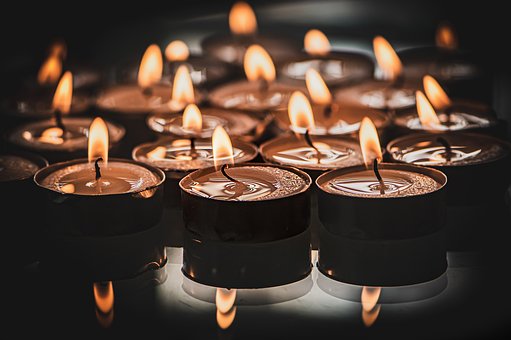In Castellar, on the heights of Menton, in a bend of the avenue Saint-Antoine, a small chapel is discreet. The building and its open porch, typical of Provençal rural architecture, do not look like much. Yet they were the scene, 399 years ago, of an unbearable horror scene. A “witch” was hanged and burned there. A story that 20 minutes tells you on occasion of Halloween.
“In 1623 and on November 16, Peirinetta Raibauda died at the hands of justice, having been strangled as a witch”, explains a sign affixed there by the previous municipality of this municipality of a thousand souls. He specifies that the body of this woman was then “burnt in front of the door” of the religious building.
The last execution in the Alpes-Maritimes
Today, the tragic end of its existence would have “a little fallen into oblivion”, entrusts to 20 minutes Deputy Mayor Hervé Léonet. “For a while, in connection with a Children’s Day and the summer solstice, we symbolically burned a witch” in cardboard, he specifies, but “this is no longer the case”.
The story, however, would be important. It would in fact be the last execution of a witch in the Alpes-Maritimes department, according to Edmund Rossi. The historian, who has gone through the episcopal archives of the region, has dedicated a passage from his book to him. The Adventures of the Devil in the Pays d’Azur.
“In the guise of black cats”
Peirinetta Raibauda would thus have been part of a group of five women judged from September 1622 on the occasion of a witchcraft trial. She was “accused of dragging her accomplices to the sabbats where, under the guise of black cats, they worshiped the devil in the ruins of the medieval village of Vieux-Castellar”. Worse, she was also found guilty “of ritual crimes of which young boys had been victims”.
The parish priest of Castellar at the time, Don Bernardino Balanco, “will try in vain to save the unfortunate, by affirming that we were dealing above all with simple-minded people and not with henchmen of the Devil”, indicates Edmond Rossi. But a death sentence will finally be pronounced on January 31, 1623 against Peirinetta Raibauda. The religious will specify moreover on the register of the deaths of the parish: “it was a poor woman”.
“Witches” wrongly accused of food shortages
The website of the town hall of Castellar specifies that the “witch was hanged and then burned” and “her ashes scattered in the medieval site”. As if to warn of the fate that would be reserved for those who wanted to imitate him?
At the time, “the women of the country, followers of herbal medicine, were often suspected by the clergy of strange powers, such as that of causing famine by acting on the fate of the crops”, recalls the historian. However, “only climatic disturbances, such as the terrible winter of January 1623 or the previous heat waves were guilty of these calamities”, he concludes.
We want to give thanks to the writer of this article for this amazing web content
Accused of “ritual crimes”, who was the “witch” of Castellar?
Our social media profiles here , as well as other related pages herehttps://nimblespirit.com/related-pages/

